By creating an account, I agree to the
Terms of service and Privacy policy
Choose your country and language:
Africa
Americas
Asia Pacific
Europe
TThe Origins of Early Sapiens Behaviour – Mother Africa Welcome Home exhibition showcases the modern human origins and innovations that were discovered at three unique archaeological sites near the southern tip of Africa.
Ever wondered where Homo sapiens – that’s modern humans like you and me – came from? For decades scientists and the public believed modern humans evolved and developed language and culture in Europe, but now a team of archaeologists from South Africa have proven that we all have our origins in southern Africa.
It took this team – a collaboration of local and international scientists – some 30 years to painstakingly excavate three sites – Blombos Cave, Klipdrift Shelter and Klasies River cave, to discover that between 70 000 to 120 000 years ago some of our early ancestors lived and evolved around the southern tip of Africa. Archaeologists discovered and carefully dated a number of artefacts and handmade tools found in the caves and that were used, for example, to hunt or create intricate rock art, giving us unique insight into the life, symbols, culture and environment of some of the early Homo sapiens.
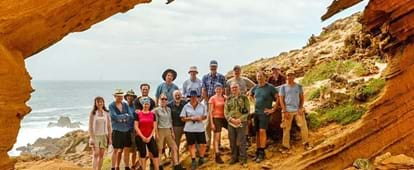
TThe scientists who discovered the artefacts in these caves were led by South Africans Professor Christopher Henshilwood, Dr Karen van Niekerk and Professor Sarah Wurz, along with a team from the SFF Centre for Early Sapiens Behaviour (SapienCE) at the University of Bergen in Norway, and the DST-NRF Centre of Excellence in Palaeosciences at the University of the Witwatersrand in Johannesburg where their research programme focuses on early human origins and innovations in Southern Africa.
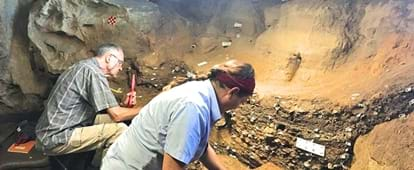
TTo celebrate these phenomenal discoveries and present an opportunity for the world to see them, the Iziko Museum in Cape Town hosted the opening event of The Origins of Early Sapiens Behaviour – Mother Africa Welcome Home Exhibition on 17 April 2019. Among the distinguished speakers were Ms Rooksana Omar, CEO of Iziko Museums of South Africa, award-winning documentary filmmaker Craig Foster whose work forms part of the exhibition, Professor Bruce Rubidge, Prof. Christopher Henshilwood and Minister of Tourism, Mr Derek Hanekom, who took great pride in enlightening guests on just how relevant this globally significant discovery (now housed in an exploratory exhibition) is to South Africa and the world. Ms Omar eruditely described the exhibition as “a tribute to human expression and humanity”.
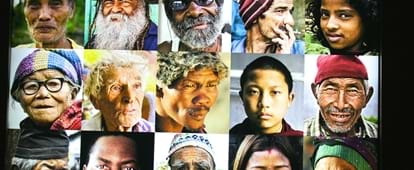
AAt the heart of the exhibition are 16 unique displays, including six videos, that tell the story of modern human’s humble beginnings; a multi-sensory journey that takes you into the daily lives of early Homo sapiens and exhibits that showcase the remarkable finds that document our evolution from 50 000 to 120 000 years ago.
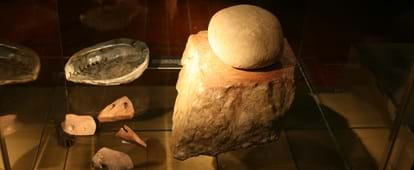
AAmong these are many world-wide firsts, such as an ochre-processing toolkit that was used to create a red ochre-rich paint that was mixed with seal fat and stored in an abalone shell – considered the first known containers. Others are the oldest collection of abstract art, the oldest bone awls used for sewing, the oldest chemistry kit, among the first pieces of handmade jewellery and the first evidence for the use of a bow and arrow.

IIt’s the drawing of an abstract design on a piece of silcrete (stone), using an ochre crayon, that has captured the world’s imagination. Considered the earliest drawing by Homo sapiens and dating back 73 000 years, this original abstract design was named the world’s first ‘hashtag’. These artefacts are all symbols, the use of which is unique to Homo sapiens and are still used by us today.
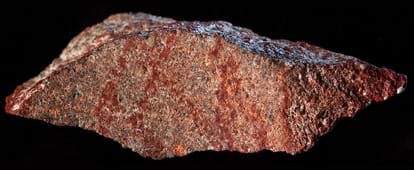
SSo what did our ancestors look like all those years ago? According to Professor Henshilwood, teeth recovered at Blombos Cave and Klipdrift Shelter show that 75 000 years ago the people living in these caves were anatomically and behaviourally modern – they looked almost just like us. “There was of course variation, as is in the world today, but if you walked past one of the Blombos people in the street today you would not notice anything strange or different,” he said.
Living on the southern Cape coast 100 000 years ago was akin to living in paradise. People were healthy and had an abundant supply of food, both from the ocean and the land. The early sapiens’ primary diet included a wide variety of animals, from big game like eland to smaller animals such as dassies, dune mole rats and tortoises. “The bones are preserved in the sites, and that is how we know which species they ate,” emphasises Dr Van Niekerk.
“It’s possible that Homo sapiens' diet had an effect on their intellectual growth,” she explains, adding that “by regularly incorporating aquatic foods such as shellfish but also some fish into their diets, which are rich sources of brain foods, omega 3 fatty acids, iodine, iron, zinc, copper and selenium, they developed bigger brains, and with that came a cultural explosion”.
Further studies have shown that our ancestors – fit, strong, healthy and smart - gradually moved north, along the coast, inland to East Africa and from there to Asia and the rest of the world. It was a “globe-conquering” journey that lasted some 70 000 years.

HHonorary guest, Minister of Tourism, Mr. Derek Hanekom noted that he was immensely honoured to open the Origins of Early Sapiens Behaviour Exhibition, also known as Mother Africa – Welcome Home. He expressed his wish that people from all over the world - but especially all South Africans - will have the opportunity to learn about our common ancestors who, in part, originated from a handful of people who lived on our southern and western coasts, and embrace the fact that we are all part of one common species.
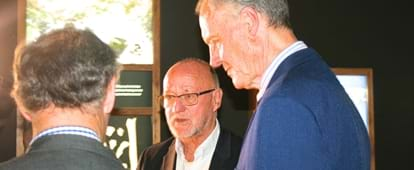
Iziko South African Museum
IIzak Venter of the Hessequa Society for Archaeology described the three decades of extensive research and excavation that has culminated in this extraordinary exhibition as “A fine work of art and science.”
Research fellow, Dr Renee Rust of the School of Geography, Archaeology and Environmental Studies at the University of the Witwatersrand says: “The displays linger between deep academic theories and excellence of the research, anchored in the practical reality of the search for modern man, while capturing the living, breathing reality of actual storytelling – a winner in bringing it all to the public.”
The Mother Africa – Welcome Home exhibition is open for all to enjoy and learn from and in the works are replica exhibitions destined for Still Bay near Blombos Cave and at the De Hoop Nature Reserve Interpretation centre. The hope is to take the exhibition around the world in due course.
TTHE CRADLE OF HUMAN CULTURE
The exhibition will ultimately form part of the recently-launched Cradle of Human Culture tourism hub. This tourism experience will link the Cradle of Humankind (which hosts the places of origins for some of our human species) to the cultural sites in the Western Cape where early modern human behaviour occurred. This Cradle of Human Culture experience will stretch across six regions of the Western Cape, from the West Coast Fossil Park up to Mossel Bay on the southern coast and beyond.
Parallel to this, the Western Cape Cabinet approved the establishment of an Archaeological and Palaeontological Heritage Tourism Route. The key sites for this Route will be the three proposed sites Blombos Cave, Diepkloof Rock Shelter and Pinnacle Point Site Complex. Although Blombos Cave cannot be visited there will be a new display centre in nearby Still Bay in 2020. These sites are expected to be proclaimed UNESCO World Heritage sites, a tremendous boom for South Africa and our tourism.
There you have it, just another reason to visit South Africa where you can discover the remarkable African roots of all mankind at the Origins of Early Sapiens Behaviour – Mother Africa Welcome Home Exhibition at the Iziko Museum in Cape Town, on until April 2020.
Go on - embrace the findings of our common ancestry and let’s all unite as one regardless of where in the world we live. Africa is our original home.
Related Articles

